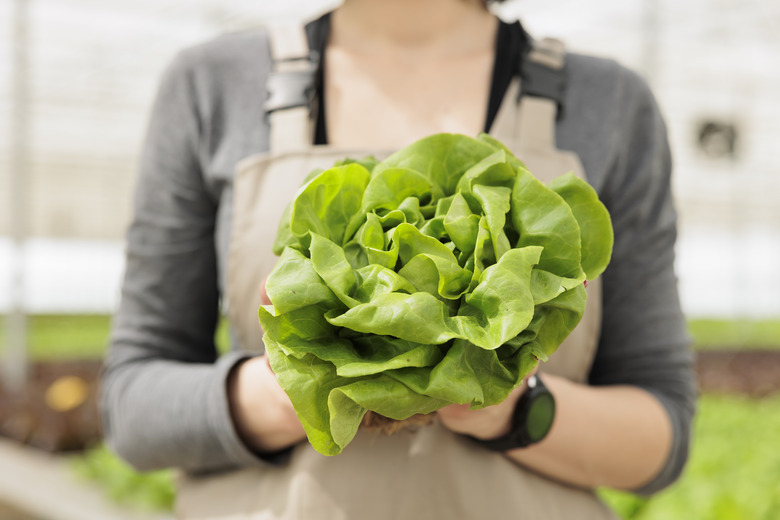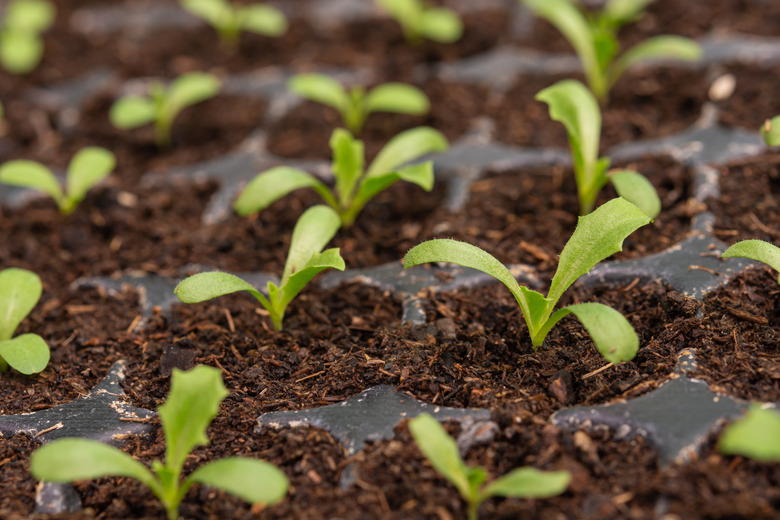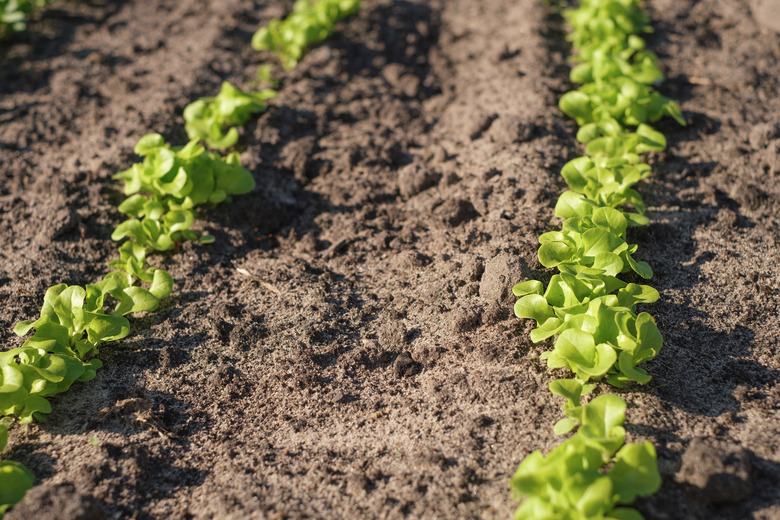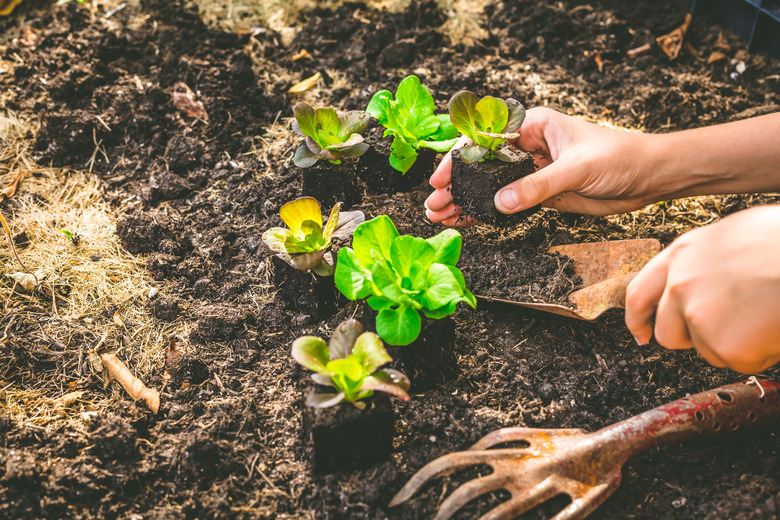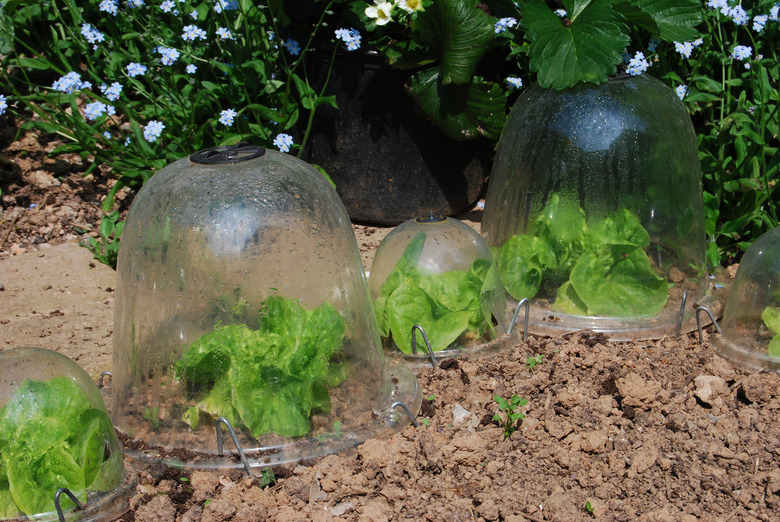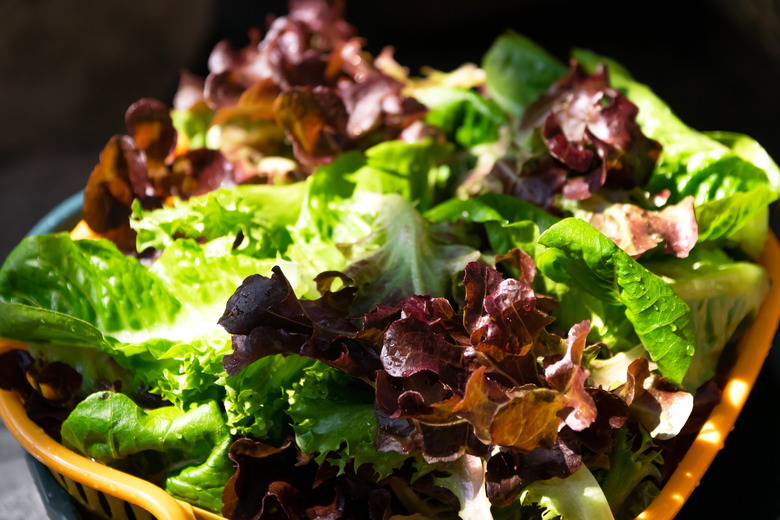How Long Does It Take Lettuce Seedlings To Sprout?
Lettuce (Lactuca sativa) is one of the most widely grown annual vegetables in home gardens, because it is easy to grow and versatile to use. Hundreds of varieties of lettuce exist, from romaine lettuce (Lactuca sativa var. longifolia) to butterhead (Lactuca sativa var. capitata)—varieties that are grown for their soft, buttery leaves.
All lettuce varieties must be started from seed each year, whether in autumn or in early spring. The seeds germinate well at lower temperatures, which is one reason they are known as "cool-season" or "cool-weather" crops. However, they do need a good balance of warmth, moisture and light to sprout in the average lettuce germination time frame of 7 to 10 days.
Tip
The exact amount of time it takes for lettuce seeds to germinate varies from 2 to 15 days depending on a variety of factors, but the average germination time is typically 7 to 10 days.
About Lettuce Seed Germination
**Lettuce seeds can germinate as soon as two days after planting, or it can take up to two weeks.** The time it takes for lettuce seeds to form sprouts varies depending on soil temperature, moisture and how much sunlight is available to the seeds.
Seeds sown in sandy or mineral-based soil with less organic content may not germinate as quickly or reliably as seeds sown in soil that is rich in organic matter. Lettuce seeds will also not germinate if they are kept too warm.
Deep sowing can also impact how quickly lettuce seeds sprout because they need light to germinate.
Sowing Lettuce Seeds
Hot weather is hard on lettuce, so it is typically grown in early spring when the weather is cool. In warmer climates with mild winters, lettuce is also planted in autumn for harvest during the winter months.
Lettuce seeds can be direct-sowed in the garden, or lettuce seedlings can be started in small pots for later transplant.
Direct-Sowing Lettuce Seeds
When direct-sowing lettuce seeds outdoors, choose a planting site in your vegetable garden with full sun and good drainage or sow the seeds in a raised bed. Prepare the planting site several weeks before sowing the seeds so that the soil has time to settle.
1. Till the bed to loosen up the soil. Remove any pieces of debris from the bed, such as rocks or sticks. 2. Mix a 1-inch layer of compost into the top few inches of the soil. Water the bed to settle the soil. 3. Form 1/8-inch-deep furrows 12 to 18 inches apart. Sow the seeds 1 inch apart along the furrow. Cover the seeds with a scant layer of soil. 4. Water with a fine spray or mist every day to keep the lettuce seeds moist. Do not use a heavy flow of water or the seeds might dislodge. 5. Watch for lettuce sprouts in approximately one week. Then, thin out the seedlings according to the type of lettuce.
Different lettuce varieties need different spacing. When thinning out lettuce seedlings, loose-leaf lettuce, such as bibb lettuce, should be spaced 4 inches apart. Romaine and butterhead varieties need 8 inches of space, and crisphead or iceberg-type head lettuce needs 16 inches of space to develop.
Tip
Lettuce can also be sown by broadcasting the seeds evenly across a prepared bed.
Starting Lettuce Transplants
Learning how to grow lettuce transplants is a good idea in warmer climates where bolting is a problem. Lettuce seed-starting should be done indoors (or in a cold frame) three to four weeks before planting time.
1. Start lettuce seeds in 1-inch starter cells or in small peat pellets. Fill the container with moist potting soil. 2. Sow lettuce seeds in the starter cells or pellets at a depth of 1/8 inch. Lettuce seeds need some light to germinate, so never plant them too deeply. 3. Set the starter cells near a bright, sunny window or under grow lights. The best germination temperature for lettuce is between 55 and 65°F. So no bottom heat is needed under most circumstances. 4. Mist the soil whenever it appears dry on the surface, but avoid making the soil too wet or the seeds could rot. It takes roughly one week to germinate lettuce seeds indoors, but it could take longer. 5. Grow the lettuce seedlings under bright light for a few weeks and then move them to a sheltered location outdoors to harden for three days before transplanting them into the garden. The hardening process will help the seedling survive in the garden.
Prepare your bed as you would for planting seeds directly in the garden. Plant lettuce seedlings in rows spaced 12 to 18 inches apart. Space them according to the type of lettuce, with romaine or butterhead lettuce spaced 8 inches apart, crisphead or iceberg-type lettuce spaced 16 inches apart and bibb lettuce seedlings spaced 4 inches apart.
Tip
Cover your planting site with a thick layer of straw for a few days before planting lettuce, which will cool the soil and help prevent bolting.
Growing Lettuce Seedlings
Successfully growing lettuce seedlings comes down to keeping them cool and moist, but transplants may also need a little added protection as they become established.
Water Often
Lettuce needs constant moisture to keep the leaves hydrated and mild tasting, but too much water can cause serious root problems. **Check the soil moisture often and water only if it feels nearly dry on the surface rather than relying on a strict watering schedule.**
Lettuce wilts when it needs more water. Simply watch the leaves and water if they start to look wilted. Only a little water is need to keep soil moist; it doesn't always need to be watered heavily.
Spread Mulch
Lettuce has a shallow root system that can dry out easily, so a layer of mulch spread between the rows will help protect the roots from drying out as well as keep the roots sheltered from high temperatures.
Use clean straw or other lightweight material for mulching between lettuce rows.
Provide Cover
Lettuce seedlings sometimes need cover to shelter them from fluctuating temperatures. Row covers work well for large beds of lettuce, while gardeners with smaller lettuce patches can cover the plants with cloches. A 1-gallon plastic milk jug with the bottom cut off can be used to cover lettuce seedlings, as can a traditional glass cloche.
Lettuce plants also benefit from shade cloth coverings when the weather starts to warm. Shade cloth is an especially good idea for red-leaf lettuce grown in warmer areas because the red pigment absorbs more heat, so the leaves wilt faster.
Controlling Pests
Slugs, snails and aphids are all common lettuce pests that can cause serious damage. Slugs and snails can be removed by hand and thrown away, or you can position a shallow plate of beer near the lettuce plants. It attracts slugs and snails that then drown in the sugary liquid.
Spreading diatomaceous earth around the lettuce plants can also help eliminate soft-bodied pests, such as snails and slugs.
Prevention is the best control method for aphids on lettuce. Companion planting with alliums, such as chives (Allium schoenoprasum, zones 3 to 10) and garlic (Allium sativum, zones 3 to 8), will discourage aphids from colonizing the leaves. Established aphid colonies can be destroyed with insecticidal soap or a strong spray of water.
Harvesting Lettuce
Harvesting lettuce is done at the end of its growing season before it bolts, which is when the plant produces a flower stalk.
Looseleaf varieties, such as red leaf or oak leaf lettuce, can be harvested by plucking off the outer leaves as they mature, or the entire head can be cut off at ground level when it reaches a harvestable size. Harvest lettuce varieties like crisphead or iceberg once the center of the lettuce head becomes firm.
Tip
Wash lettuce in several changes of fresh, cold water until there is no sign of dirt or debris. Store loose lettuce leaves in a plastic zipper bag with a moist paper towel.
